Not long ago, managing Google Ads campaigns manually gave advertisers greater control over every aspect of their strategy. However, in today’s fast-paced digital landscape, leveraging artificial intelligence (AI) in your Google Ads approach has become essential, not just an option.
Google’s targeting capabilities, including keyword match types, are expanding, pushing advertisers higher up the funnel. Without AI-driven bidding and optimisation, your ads may reach a less qualified audience, leading to diminished lead quality. While AI offers valuable advantages—such as automation and the ability to reach a wider audience—its success depends on how well it’s implemented.
If used incorrectly, AI can work against your goals, reducing your control over targeting and lead quality. To avoid this, it’s crucial to approach AI systematically. Start by focusing on bottom-of-the-funnel targeting, ensuring it performs effectively before gradually testing broader targeting options in separate campaigns with dedicated budgets. In this blog, we’ve explored how to make Google’s AI work for you, offering tips on how to regain control over your advertising and optimise your results in the age of AI.
What is Google Ads AI / Machine Learning?
Google Ads AI, also known as Google Ads Intelligence, is a suite of artificial intelligence-powered tools and features designed to enhance the effectiveness and efficiency of advertising campaigns on the Google Ads platform.
When used correctly, AI can simply the ad creation process, improve targeting, and increase the return on investment for advertisers of all sizes.
Google Ads AI, a suite of machine learning tools and algorithms, is designed to optimise and transform how businesses engage with their potential customers online. This innovative approach utilises artificial intelligence to analyse vast amounts of data, automate complex processes, and enhance decision-making in real-time, empowering advertisers to achieve better outcomes with less manual effort.
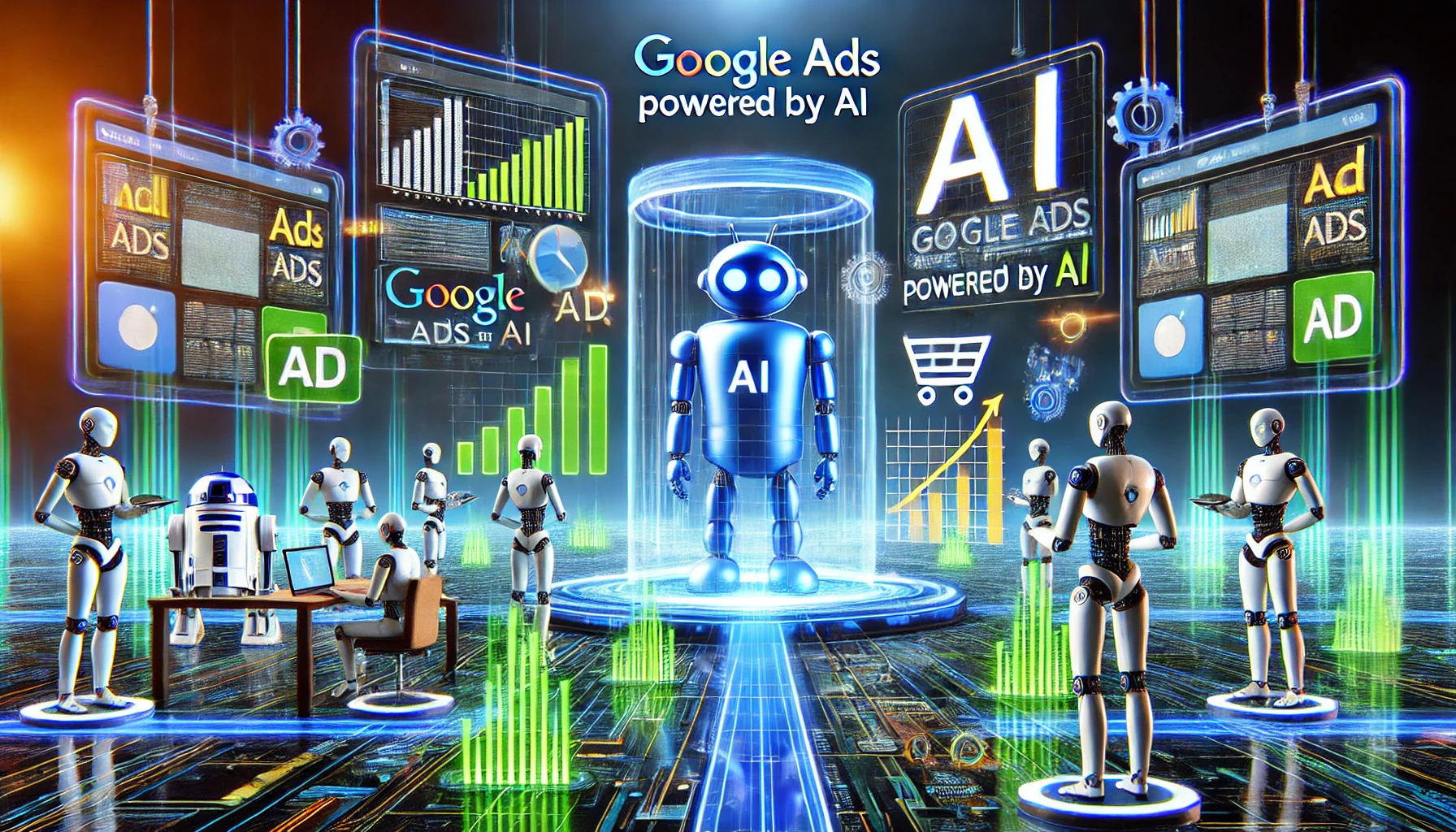
How does Google Ads AI Work?
Smart Bidding: At the heart of Google Ads AI lies its Smart Bidding feature. This tool uses machine learning to optimise your bids in real-time, aiming to maximise the return on investment. Smart Bidding strategies like Target CPA (Cost Per Acquisition), Target ROAS (Return On Ad Spend), and Maximise Conversions allow advertisers to tailor their bidding strategies to match their specific business goals. An AI-powered automated bidding system that optimises bids based on historical data and conversion goals.
Responsive Search Ads: AI also powers Google’s Responsive Search Ads, where multiple headlines and descriptions are tested and automatically arranged to display the most effective combinations to different users. This adaptability not only increases the relevance of ads but also enhances the engagement rates, driving better campaign performance. Machine learning technology that tests various combinations of headlines and descriptions to determine the most effective ad copy.
Audience Expansion: Google Ads AI can identify patterns and similarities in audience behaviour, enabling it to find new segments likely to be interested in your products or services. This expansion is not just about reaching more people but reaching the right people, thus increasing the efficiency of ad spend.
Predictive Analytics: Leveraging historical data, Google Ads AI predicts future customer actions, such as the likelihood of a click leading to a purchase. These insights allow for more strategic ad placements and content, ensuring that campaigns are more targeted and results-driven.
Automated Insights: One of the most significant advantages of AI is its ability to provide actionable insights automatically. These insights can highlight changes in consumer behaviour, campaign fluctuations, or opportunities for optimisation, guiding advertisers on where to focus their efforts for maximum impact.
Broad Match Type & Wider Exact and Phrase Match::
Exact match is no longer exact, and phrase is more like broad match than ever before. Broad Match is a powerful keyword targeting option within Google Ads, designed to reach a wider audience by displaying your ads for searches that include misspellings, synonyms, related searches, and other relevant variations of your targeted keywords. This flexibility is essential for advertisers looking to maximise exposure and capture a broad spectrum of potential customer queries.
Performance Max Campaigns: These campaigns use AI to analyse landing page content and assets to find the best converting queries across multiple Google platforms.
Conversational Experience: A chatbot-like interface that guides advertisers through the campaign creation process, from generating keywords to crafting ad copy and selecting visuals.
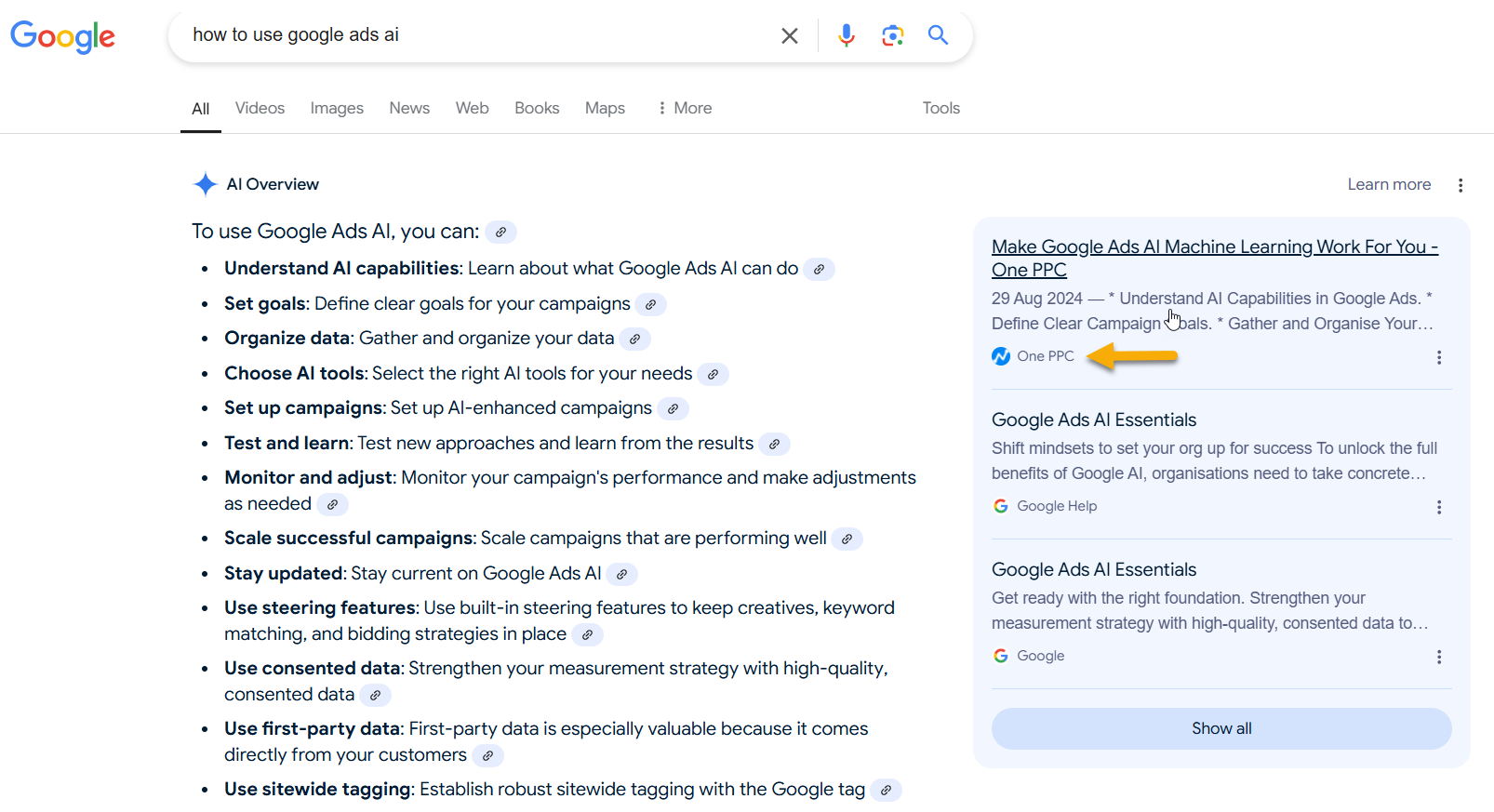
The Potential Benefits of AI Advertising
By leveraging artificial intelligence, Google Ads offers several advantages to advertisers:
Increased Efficiency: Automating routine tasks such as bid adjustments and ad testing frees up time for strategic thinking and creative work, making advertising campaigns more efficient.AI streamlines the campaign creation process, saving time and effort for marketers. Enhanced Targeting: Intelligent algorithms help identify high-intent keywords and relevant audience segments.
Enhanced Accuracy: AI’s ability to analyse data at scale minimises human error and ensures more accurate targeting, leading to better quality leads and higher conversion rates.
Scalability: With AI, campaigns can easily be scaled up or down based on performance data and business needs without the same proportional increase in workload.
Creative Optimisation: AI-generated assets and ad variations can lead to better ad performance and engagement.
Data-Driven Decisions: Machine learning models analyse vast amounts of data to make informed bidding and optimisation choices.
As Google continues to develop and refine its AI capabilities, advertisers can expect even more sophisticated tools and features to emerge, further revolutionising the digital advertising landscape.
Advantages of Broad Match
- Increased Traffic: Broad Match can significantly increase the volume of traffic to your ads by allowing for a wider array of search terms.
- Discovery of New Keywords: It facilitates the discovery of new, valuable keywords that might not have been considered initially, broadening your reach and competitive edge.
- Simplified Management: Reduces the need for an exhaustive list of keywords, simplifying campaign management while still capturing extensive relevant traffic.
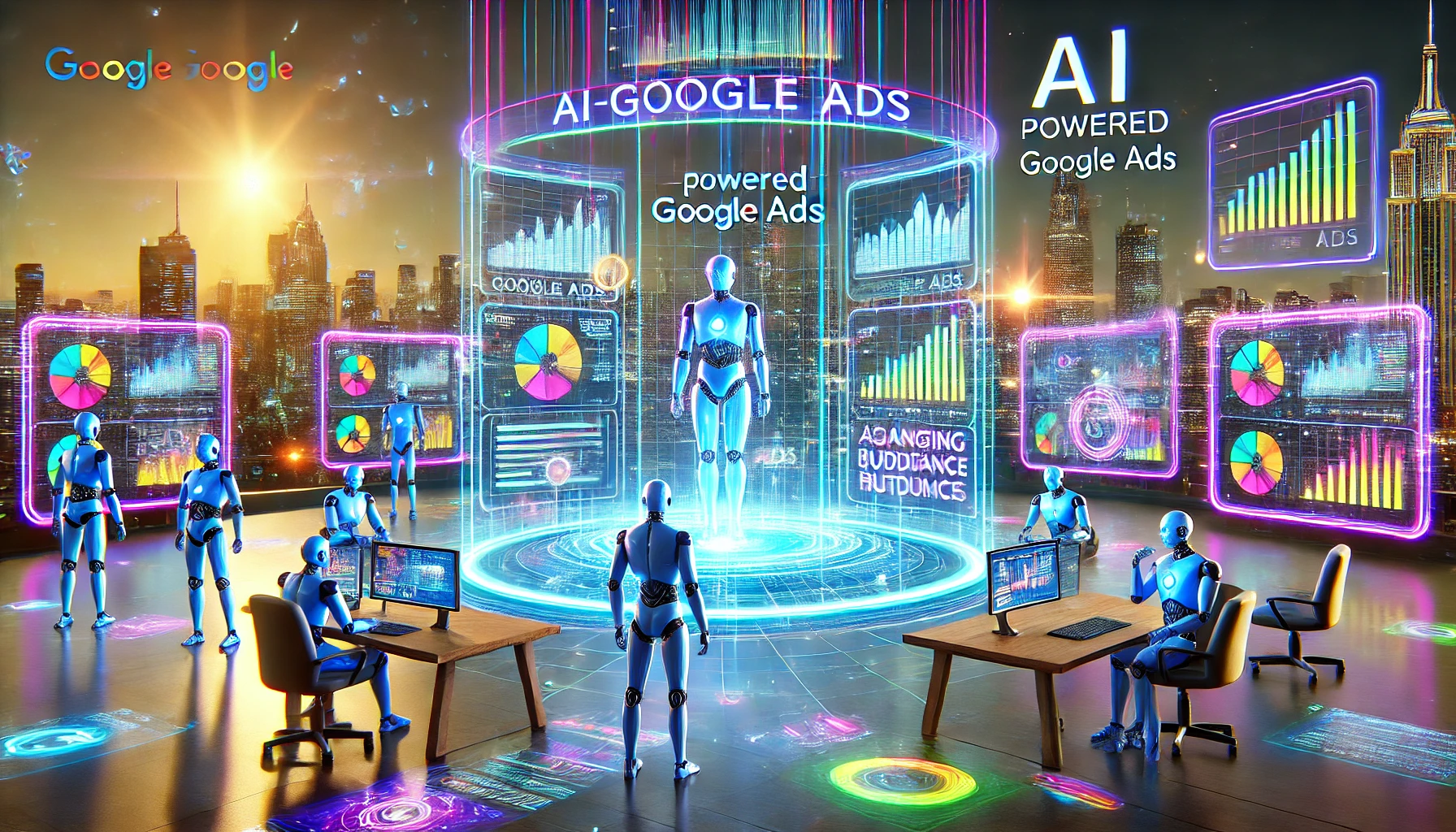
The Potential Pitfalls of AI Advertising
Using Google Ads AI offers numerous advantages, such as increased efficiency and enhanced targeting capabilities. However, there are potential drawbacks when comparing AI-driven campaigns to traditional manual campaigns.
While Google Ads AI offers numerous benefits, it also comes with potential drawbacks when compared to manual campaigns.
While Google Ads AI can significantly enhance campaign performance and efficiency, it’s crucial for advertisers to balance the use of AI with manual oversight and intervention. This hybrid approach ensures that campaigns remain aligned with strategic business goals, adapt to new market conditions effectively, and maintain a level of creativity and personal touch that AI alone might not achieve. Here’s a closer look at some of the challenges and considerations:
Loss of Granular Control
Google Ads AI automates decision-making based on data and algorithms. While this can improve efficiency, it can also result in a loss of granular control over individual campaign elements. In manual campaigns, advertisers can make specific adjustments based on nuanced insights or emerging market trends that AI may not immediately respond to. One of the primary concerns with AI-driven campaigns is the reduced level of control advertisers have over specific aspects of their campaigns:
Wider Targeting Lead Quality
AI systems may not allow for the same level of precision in selecting and excluding keywords and audiences that manual campaigns offer.
Loss of Granular Control
There’s less control over exactly where and when ads appear across Google’s network.
Learning Curve and Initial Performance
Implementing AI-driven campaigns requires a shift in strategy and can lead to initial performance issues:
Data Collection Phase
AI systems need time to gather and analyse data, which can result in suboptimal performance during the initial learning period.
Dependency on Quality Inputs
The effectiveness of AI campaigns heavily relies on the quality of inputs provided by advertisers. If you don’t get your Google Ads conversion tracking setup correctly, including setting primary and secondary conversions- and ideally offline conversion tracking, you might not be providing an adequate training dataset.
Over-Reliance on Algorithmic Learning
AI systems require substantial historical data to learn and make accurate predictions. New campaigns or products without much historical data might not perform as well because the AI lacks sufficient information to optimise effectively. This can lead to inefficiencies or suboptimal spending in the early stages of a campaign.
Potential for Misalignment
There can be a misalignment between the immediate business objectives and the AI’s learning phase. For instance, an AI system might focus on gathering data and learning in the short term, which could detract from more direct performance goals like immediate sales or lead generation. Improperly defined campaign objectives can lead the AI to optimise for the wrong outcomes.
Adapting to Rapid Changes
AI models may not adapt quickly to sudden market changes or unique, one-off events. Manual interventions can be more responsive in such scenarios, allowing advertisers to pause campaigns or shift strategies more dynamically.
Broad Targeting Issues
AI-driven campaigns, especially those using broader targeting like Broad Match in keywords, may attract traffic that is less relevant. This can lead to lower conversion rates and higher costs per acquisition as the AI experiments with different targeting options to learn what works best.
Transparency and Understanding
Google Ads AI operates as a ‘black box’ where many of the internal workings and decision processes are not visible to the advertisers. This lack of transparency can be challenging for marketers who wish to understand exactly why certain decisions are made or why campaigns are performing in a particular way.
Limited Data:
Smaller audience sizes or unique product offerings may not provide enough data for AI to make optimal decisions.
Budget Management
Automated systems can sometimes make rapid, large-scale adjustments that spend budgets quickly, especially in competitive bidding environments. Manual campaigns allow for more predictable budget use, as changes are made deliberately by the campaign manager.
During this learning phase, advertisers might see higher costs or lower returns until the system optimises.
Bid Adjustments:
Automated bidding limits the ability to make real-time, manual bid adjustments based on immediate market changes or business needs.
Creativity Limitations
While AI can test and optimise ad combinations and placements, it often relies on predefined templates and machine learning models that might limit creative expression. Unique, innovative ideas that fall outside of these templates might not be fully realised or tested in an AI-driven environment. Poor-quality assets or insufficient variations can limit the AI’s ability to create effective ad combinations.
Limited Insights & Transparency Issues
It can be difficult to pinpoint why certain ads or keywords are performing well or poorly. AI-powered campaigns often operate as “black boxes,” making it challenging for advertisers to understand exactly how decisions are being made.
Attribution Challenges:
Understanding which specific elements of a campaign are driving conversions becomes more complex.
Contextual Nuances:
AI might miss subtle market or audience nuances that human marketers would recognise and act upon. The ability to interpret AI-generated insights and translate them into actionable strategies becomes crucial.
Skill Set Shift:
Adopting AI-powered campaigns requires a different skill set from traditional manual campaign management. Marketers need to shift from tactical, day-to-day management to more strategic, big-picture thinking. However, this depends on the reporting and measurement criteria that we shall discuss in this blog post.
While Google Ads AI offers significant advantages in terms of efficiency and scalability, it’s important for advertisers to review these potential drawbacks and put plans in place to make sure the AI is achieving your goals. A balanced approach, combining AI-driven automation with human oversight and strategic input, may yield the best results for many advertisers.
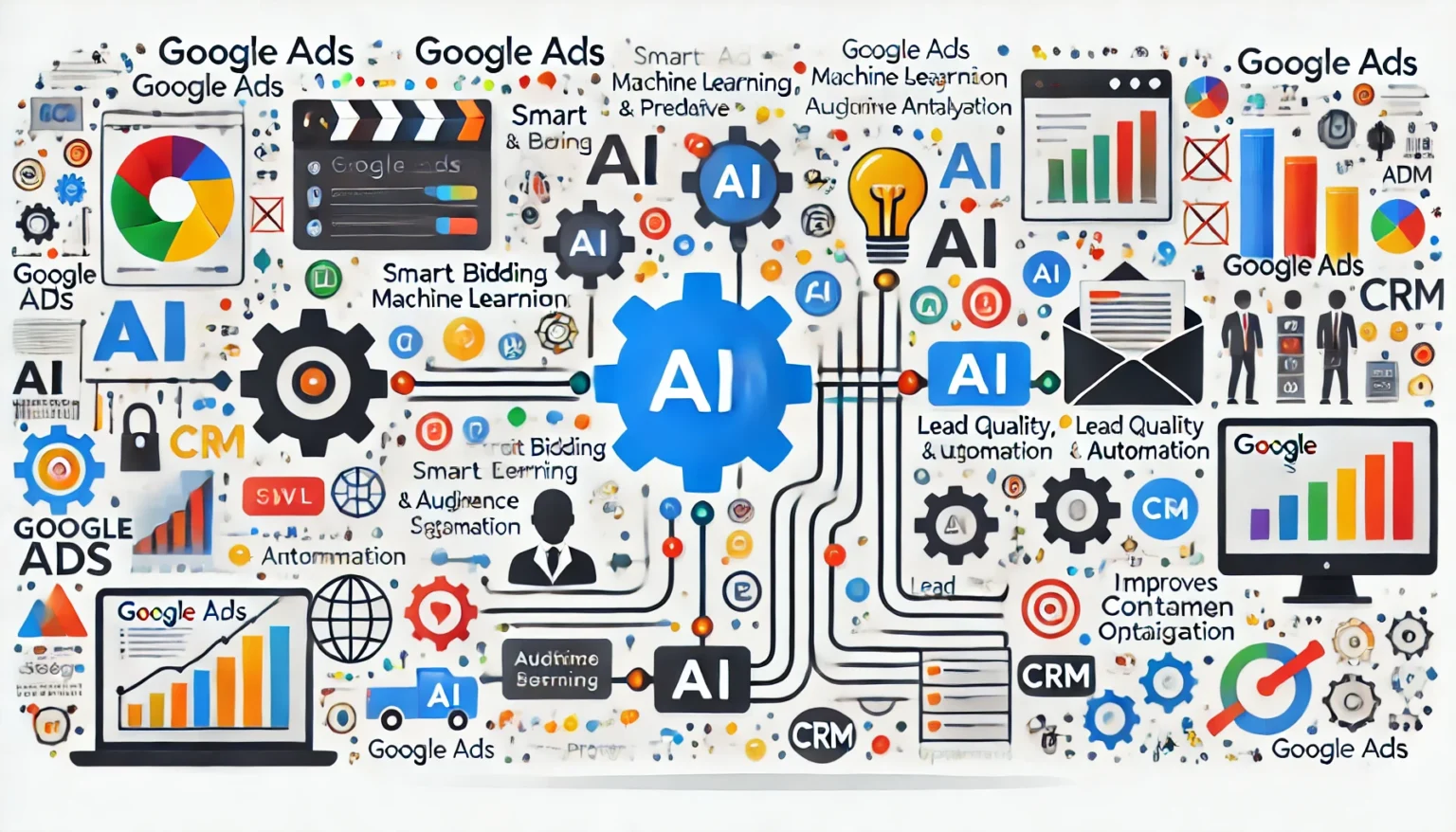
Google's AI Recommendations
Google Ads offers a diverse array of AI-driven recommendations intended to support advertisers. While certain recommendations consistently yield positive results, others should be assessed carefully, taking into account factors such as account size, industry, budget, and additional relevant considerations.
Here are some key AI recommendations and features you can leverage:
Automatic(Smart) Bidding:
- Target CPA (Cost Per Acquisition): Automatically sets bids to help you achieve as many conversions as possible at the target cost-per-acquisition you set.
- Target ROAS (Return on Ad Spend): Automatically sets bids based on your desired return on ad spend.
- Maximise Conversions: Focuses on generating as many conversions as possible within your budget.
Budget Recommendations:
Insights on budget adjustments to optimise your campaign performance based on historical data and trends.
Responsive Search Ads:
Google uses machine learning to optimise your ad text combinations. By inputting multiple headlines and descriptions, Google tests various combinations to determine which performs best.
Ad Strength Recommendations:
Google provides feedback on your ads, suggesting ways to improve ad strength by optimising headlines, descriptions, and overall messaging.
Audience Insights:
Utilise audience segments based on machine learning analysis. Google identifies potential audiences for your campaigns, suggesting new segments to target.
Automated Targeting:
This feature leverages machine learning to identify new opportunities for reaching potential customers based on their search behaviour and interests.
Performance Planner:
AI-driven recommendations on budget allocation across campaigns to maximise performance and achieve your goals.
Keyword Recommendations:
Suggestions for new keywords based on search trends, helping you expand your keyword list and improve campaign relevance.
Campaign Experiments:
Run experiments using machine learning to determine which strategies yield the best results. This feature allows you to test changes without committing to them.
Performance Metrics Insights:
Google Ads uses AI to provide insights into performance metrics, highlighting areas for improvement, such as ad placement, bidding strategies, and targeting options.
To effectively implement these recommendations, regularly review your campaign performance and adapt your strategies based on the insights provided. Monitoring changes and experimenting with different approaches will help you optimise your Google Ads campaigns and leverage AI to its fullest potential.

How to Use Google Ads AI Tips
By adopting these advanced strategies, you can effectively harness Google Ads AI to significantly enhance lead quality, boost ROI, and improve overall campaign performance. Here are some refined and strategic tips to help you effectively leverage the power of Google Ads AI for optimising your ad spend, improving lead quality, and boosting revenue:
Prioritise Data Quality for AI Success:
To unlock the full potential of Google Ads AI, it’s essential to provide high-quality, well-structured data. Ensure that your conversion tracking, audience segmentation, and CRM data are complete and accurate. This allows the AI to make better-informed decisions regarding bids and targeting. Utilise both online and offline conversion tracking to offer Google a comprehensive view of your conversions.
Incorporate Key Signals for Smarter AI Targeting:
Supply Google Ads AI with vital signals such as search behaviour, custom audience segments, and first-party data from your CRM or POS systems. These inputs give the AI deeper insights into your audience, allowing it to fine-tune your campaigns for more precise targeting.
Sync CRM Data for Advanced Personalisation:
Integrate your CRM with Google Ads to utilise first-party data for more sophisticated audience segmentation and retargeting. This enables the AI to personalise ads based on customer interactions, purchase history, and lead scores, which increases relevancy and improves your return on investment (ROI).
Use Offline Conversion Tracking for Increased ROI:
Implement offline conversion tracking to link online actions, such as clicks, with offline outcomes like phone calls or in-store visits. Feeding this data into Google’s AI allows it to optimise bids more accurately, focusing on higher-quality leads that result in more valuable conversions.
Optimise with Smart Bidding for High-Value Leads:
Use Smart Bidding strategies like Target CPA (Cost per Acquisition) or Target ROAS (Return on Ad Spend) to optimise bids for leads that are likely to convert into paying customers. Integrating offline conversion tracking signals into these strategies further helps Google AI focus on prospects with the highest revenue potential, improving both lead quality and overall campaign profitability.
Leverage Audience Segmentation and Dynamic Targeting:
Google Ads AI can create segmented audiences based on user behaviour, intent, and previous interactions. Enable dynamic targeting to allow the AI to adjust parameters in real time, ensuring that your ads are delivered to the most relevant users at optimal times.
A/B Test Campaign Elements for Continuous Improvement:
Regularly conduct A/B testing on different variations of your landing pages, ad copy, and forms. Feeding the resulting performance data into Google’s AI will help it continuously refine and enhance your campaigns for better results.
Implement Enhanced Conversion Tracking for Lead Quality:
Utilise Enhanced Conversion Tracking to capture more accurate data about your leads’ quality. By feeding this information to Google Ads AI, you can fine-tune bidding strategies, ensuring a focus on high-value conversions rather than just lead volume.
Submit a Diverse Set of Creative Assets:
Ensure your creative assets—such as logos, high-quality images, and a professional website—are varied and consistently aligned with your brand. This enables Google AI to test different combinations and identify the most effective ads for your audience.
Provide a Range of Headlines and Descriptions:
Diversify your ad copy by offering multiple headlines and descriptions. Google Ads AI can then experiment with various combinations to determine which messages resonate most with your target audience.
Consolidate Campaign Structure for Better Performance:
Simplify your campaign structure to avoid over-segmentation. A consolidated structure gives Google Ads AI more comprehensive data, improving its ability to analyse and optimise your campaigns effectively.
Expand Targeting with Accurate Conversion Data:
Once you’ve collected enough conversion data, leverage Google’s auction-time insights to optimise your bids for each search query in real-time. This approach helps capture qualified leads while minimising waste on unqualified traffic.
Continuously Monitor and Refine AI-Driven Strategies:
Although Google Ads AI automates much of the optimisation process, regular monitoring is essential. Continuously evaluate your campaign performance, and adjust bidding strategies, audience targeting, and creative assets based on the data. AI thrives on iteration, so ongoing refinement is critical to long-term success.
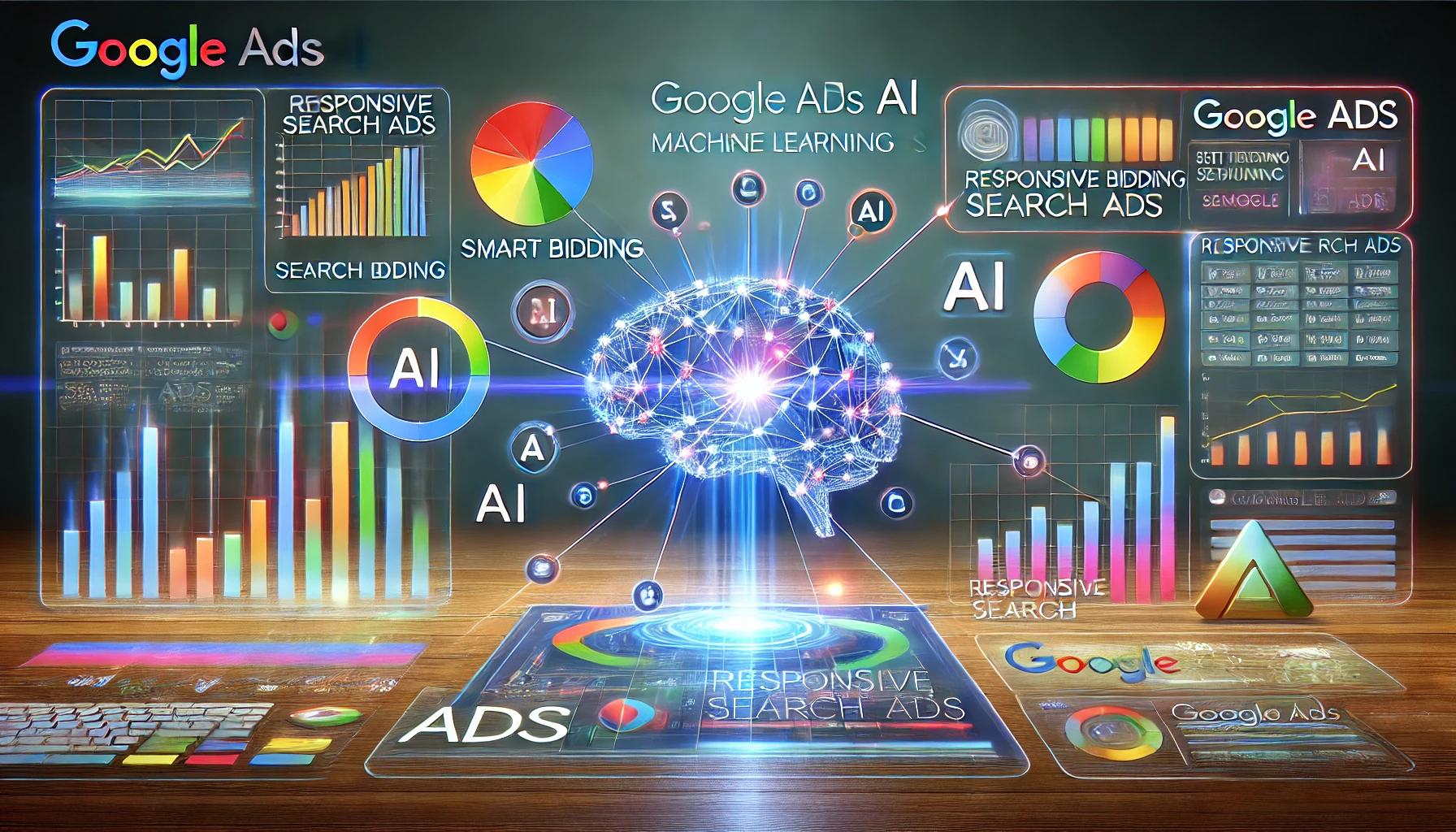
Targeting in the Age of AI and Machine Learning
Targeting has always been the key to achieving success with Google Ads. However, in the era of AI, it has evolved beyond manual keyword and audience selection.
Traditionally, advertisers concentrated on bottom-of-the-funnel targeting, using precise keywords and restrictive match types to reach highly relevant, conversion-ready audiences. Once they maximised returns from these audiences, they would move up the funnel, exploring broader targeting options to capture new interest.
Now, AI-driven targeting in Google Ads redefines this approach. AI and machine learning algorithms allow Google Ads to enhance and broaden targeting dynamically, using advanced data analysis to reach potential customers who may be missed by traditional manual targeting. For example, AI-powered tools reverse-engineer historical conversion data to find patterns in high-intent customer journeys. In real-time auctions, they identify qualified users based on nuanced behavioural data, adjusting bids and targeting criteria instantly to capture these high-potential customers.
In this AI-driven landscape, Google Ads’ use of conversion tracking has expanded beyond performance reporting to support these sophisticated targeting models. Online and offline conversion tracking now form the foundation of audience discovery and bid optimisation, transforming raw data into actionable insights that improve both lead quantity and quality. By providing Google Ads with comprehensive conversion data, advertisers train the AI to deliver high volumes of quality leads at the lowest possible cost, while honing the system’s ability to focus on the customers with the greatest long-term value.
This dual tracking strategy—capturing both online and offline conversions—optimises campaign effectiveness by balancing high lead volumes with the profitability needed to scale success in today’s digital marketplace.
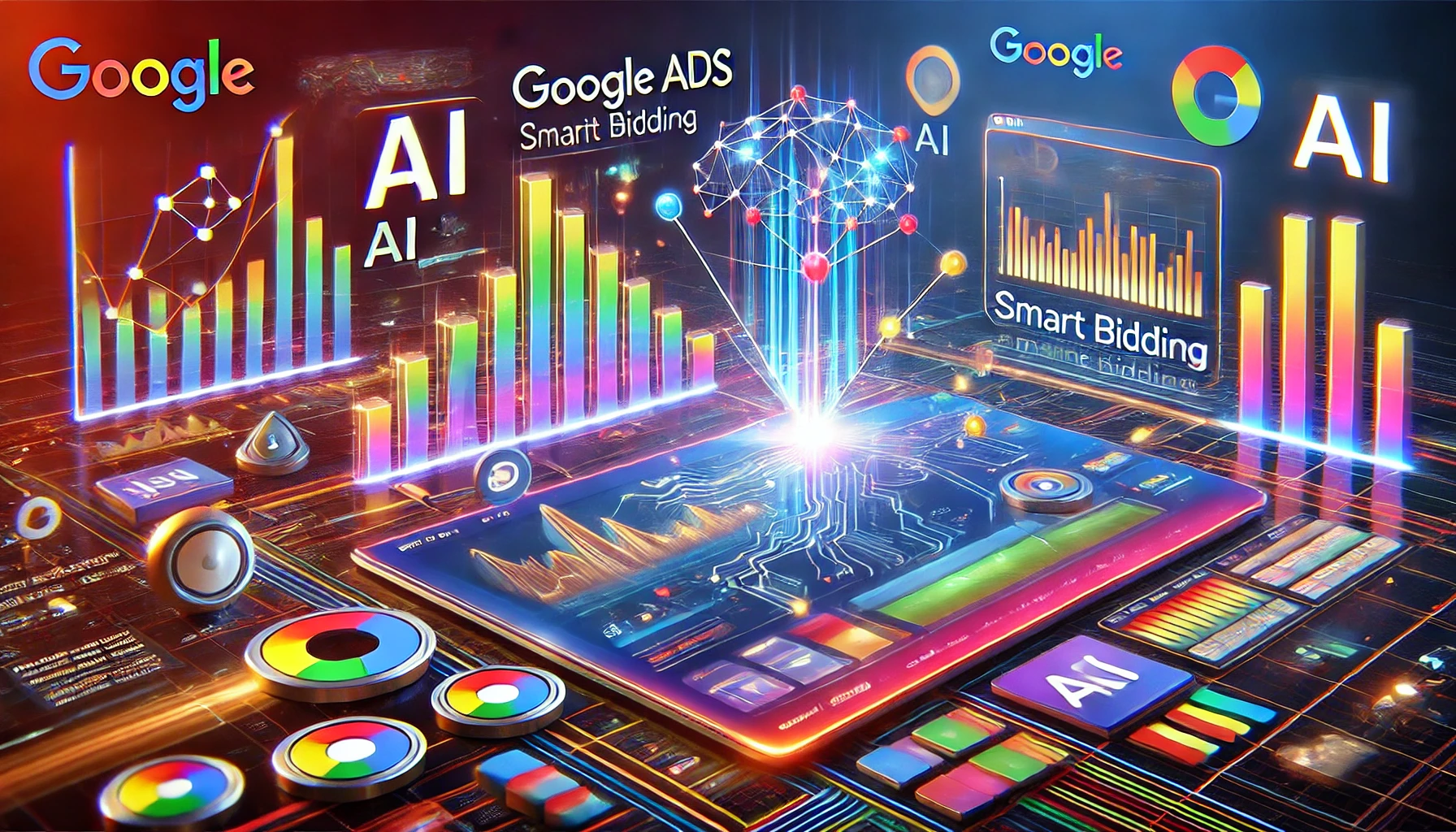
Set Goals & Measure Lead Quality & Value
The true power of AI in Google Ads lies in its ability to optimise for precise business outcomes. To fully leverage this capability, it’s essential to align your conversion tracking with your specific business goals.
Establishing Lead Quality Through Conversion Tracking
Online leads can vary significantly in qualification and value, so it’s crucial to have reliable methods for assessing lead quality. One straightforward and effective metric is the lead-to-customer conversion rate, which directly reflects lead quality. A high conversion rate signals that a substantial portion of leads are converting into customers, indicating high-quality leads. Conversely, a low conversion rate suggests lower lead quality, even if these leads come at a lower cost.
If you rely solely on Google Ads’ online conversion tracking, your lead value insights can become skewed by an average cost-per-acquisition (CPA) approach. This may result in overspending on low-quality leads and underspending on high-quality ones, preventing an optimal balance between lead quantity and quality.
To go beyond basic cost-per-lead metrics, it’s crucial to measure lead value by scoring lead forms or preferably integrating your CRM or POS system with Google Ads which allows you to track the sales funnel in greater detail, including final purchase events, leading to a more accurate assessment of lead quality.
By effectively measuring lead quality, you can direct your PPC budget more strategically toward high-quality leads, boosting return on investment (ROI). Additionally, this approach enables sales teams to concentrate on the most promising opportunities, streamline processes, and cultivate a loyal customer base.
Leveraging AI Through Value-Based Smart Bidding
AI’s potential is fully realised when you use value-based metrics to guide Smart Bidding. Here’s how to make the most of AI’s capabilities in Google Ads:
Assigning Conversion Values
Begin by assigning values to conversions based on factors that drive your business—whether it’s revenue, profit margins, or customer lifetime value. This approach enables the AI to prioritise conversions that impact your bottom line. For example, if your goal is profit maximisation, assign higher values to conversions with higher profit margins. This lets the AI focus budget and effort on high-value actions.Value-Based Smart Bidding
Once conversions are valued appropriately, implement value-based Smart Bidding across your campaigns. This AI-powered feature helps you bid more strategically on the conversions that matter most, optimising your budget allocation and maximising ROI. Smart Bidding uses machine learning to adjust bids in real-time, drawing on a variety of signals to predict both the likelihood and potential value of conversions. This real-time responsiveness allows for highly targeted bidding, improving campaign efficiency and overall performance.
In summary, aligning AI capabilities in Google Ads with your business goals through detailed conversion tracking and value-based Smart Bidding ensures that your campaigns drive the highest possible value. This approach not only increases lead quality but also improves ROI by focusing your budget where it matters most.
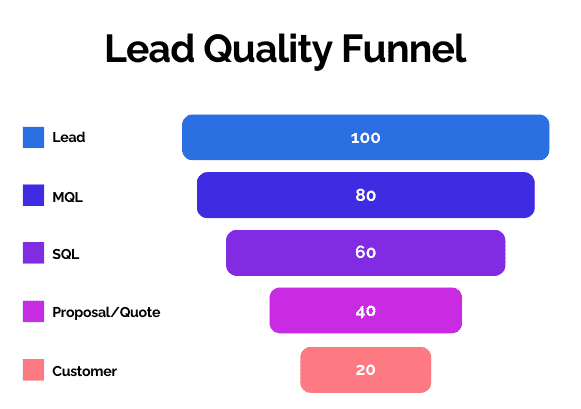
What is Offline Conversion Tracking?
Google Ads Online conversion tracking helps increase lead quantity, while offline conversion tracking helps improve lead quality.
Online Conversion Tracking: Google Ads records the number of people who fill out a form on your website as an online conversion, using the Google Pixel (Conversion Tracking Script) placed on your site. Success is measured by the number of leads and the cost per lead, which only considers the first step in your sales process (the lead enquiry).
Offline Conversion Tracking: Offline conversion tracking goes beyond just capturing form submissions by tracking what happens after the initial contact. Offline conversion tracking is a powerful feature that enhances your ability to track and optimise Google Ads using the progression of leads through your sales funnel.
Most advertisers use online conversion tracking to measure the number of leads generated and the cost per lead. However, more companies are now extending this approach by incorporating Google Ads offline conversion tracking, as recommended by Google, to gain deeper insights into lead quality and long-term value.
Remember, not all leads have the same value; some are more likely to turn into paying customers than others. Tracking what happens after the initial lead enquiry is crucial. By tracking leads through every stage of the sales funnel and optimising ad spend based on lead quality and revenue, you ensure your advertising budget is used efficiently, driving higher ROI and attracting customers who bring long-term value to your business.
Using Target ROAS with offline conversion tracking helps avoid overspending on low-value conversions by setting a minimum return threshold. Integrating offline conversion tracking is an economical investment, considering the substantial performance and revenue improvements it brings. By feeding this enriched dataset back into Google Ads, advertisers enable AI to make more accurate decisions, optimising campaigns for both immediate and long-term revenue gains.
The Benefits of Offline Conversion Tracking
With Google Ads offline conversion tracking, you can track a lead’s progression through the sales funnel—identifying whether they become a qualified lead, advance to a deal, or eventually convert to a customer. Without offline conversion tracking, you’re limited to knowing who submitted a form; however, with this feature, you gain insight into which leads later scheduled meetings, received quotes, or completed a purchase. This data enriches the machine learning algorithm, enabling it to better target ads towards leads that are more likely to convert into customers.
By syncing these lifecycle stages back to Google Ads, you enhance both optimisation and reporting capabilities, allowing machine learning AI to refine and improve your campaigns, ultimately making your marketing investments more effective. Focusing on acquiring high-quality leads enables you to allocate your ad budget more strategically, achieving a higher return on investment. Integrating your CRM with Google Ads to sync lead lifecycle changes as offline conversions allows Google to score leads based on quality, ensuring your advertising spend is directed toward generating the most valuable prospects.
- Optimised Ad Spend: Allocate more budget to ads that attract leads similar to those who have previously purchased your service. Avoid wasting money on ads that only attract form fillers without further engagement. Knowing which leads convert into high-quality customers allows for more strategic budgeting.
- Improve Lead Value Measurement: CRM integration with offline conversion tracking helps Google Ads identify the most valuable leads. Whether you set bids manually or use automatic bidding, this integration ensures your money is spent wisely. Google Ads will prioritise leads that are more likely to convert into paying customers.
- Revenue-Based Customer Scoring: CRM integration can send sales revenue data back to the ad platforms, allowing you to score customers based on the revenue they generate and their purchase frequency. This information helps optimise your advertising to achieve better results.
A best practice for improving lead quality is using Google Ads offline conversion tracking alongside Enhanced Conversion Tracking for Leads. Offline conversion tracking enables you to connect online ad interactions with offline outcomes, such as in-store purchases or phone calls, giving Google’s bidding algorithm richer insights into which leads and actions are most valuable. This setup allows for bid optimisation that aligns with increased revenue potential and lead quality, maximising both online and offline sales impact.
Lead-gen Service Versus e-Commerce
Using Google Ads for lead generation has been historically fundamentally different from optimising e-commerce sales. In e-commerce, the purchase is the final step, allowing companies to train Google’s AI to acquire the highest-value customers at the lowest cost. By contrast, lead generation focuses on capturing initial interest, which doesn’t always translate to final sales. Service-based businesses often train Google’s AI to generate leads at the lowest cost without necessarily focusing on long-term value.
Generating a sufficient volume of high-quality leads at a set target cost per lead presents a unique challenge. Lead generation is typically at the top of the sales funnel, where initial engagement attracts a broad range of potential customers, some of whom may not be qualified or ready to convert into actual sales. This is particularly challenging in PPC campaigns, where the goal is not just lead acquisition but also securing leads likely to convert into offline sales.
To address this, many service providers are now integrating CRM data, including sales funnel stages and revenue data, directly into Google Ads. This approach mirrors advanced e-commerce methods, enabling more refined reporting and optimisation by basing strategies on revenue generation rather than lead acquisition alone. E-commerce providers have traditionally had access to better data for closed-loop reporting, allowing them to view actual sales revenue within Google Ads, easily measure ROI, and ensure that campaign budgets maximise sales and minimise costs through targeted ROAS (Return on Ad Spend). For example, setting a target ROAS—such as spending £1 to generate £7 in return—maximises potential outcomes. Previously managed through manual bidding, AI now optimises for these same goals in e-commerce, making this approach seamless.
For service providers, however, using AI to meet specific objectives can be more complex. While e-commerce optimises for a completed sale (the final stage in the sales process), AI for lead generation focuses on the cost per lead, representing only the initial step. This “input” is often a less reliable indicator of potential or lead quality. As a result, Google’s AI is often trained to prioritise high lead volume at the lowest cost using Target CPA, without necessarily factoring in lead quality.
While a narrow set of highly targeted keywords can help reach bottom-of-the-funnel prospects, broadening targeting may dilute quality, as AI might not always prioritise the ideal lead profile. This can lead to a higher number of low-cost leads that don’t convert as effectively. As a result, even with an increase in lead volume, the lead-to-customer conversion rate may remain low, ultimately impacting the business’s bottom line less favourably than expected.
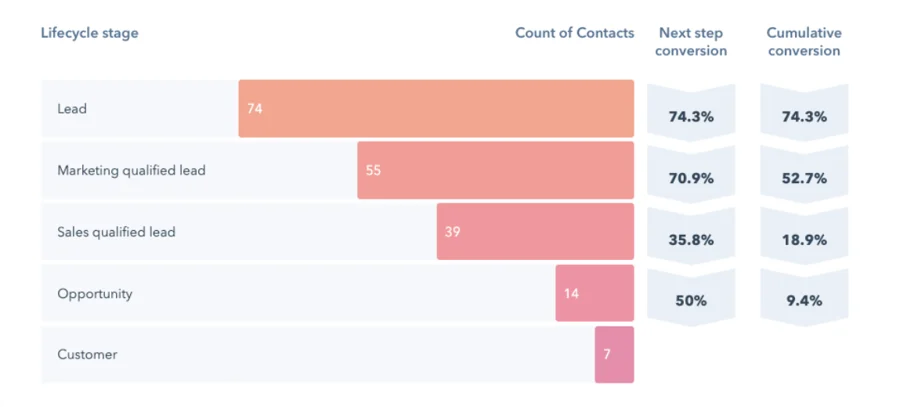
ROAS Optimisation for Service Providers
The good news is that it is continually becoming easier for service providers that use Google ads to generate leads that are closed offline.
Lead Value Optimisation (LVO) is a crucial strategy for service providers aiming to maximise the return on investment from their Google Ads campaigns. By employing Return on Ad Spend (ROAS) bidding strategies, service providers can dynamically adjust their bids based on the projected value of each lead. This method not only targets ads more effectively but also ensures that marketing budgets are allocated towards the most lucrative opportunities.
ROAS bidding uses historical conversion data and real-time insights to predict the future value of leads. For instance, if a particular type of lead, such as those signing up for high-value services, consistently converts into significant revenue, Google Ads will automatically increase bids for similar leads based on their expected conversion value. Conversely, for leads that tend to generate less revenue, the system will lower the bids, conserving your advertising spend.
This sophisticated approach allows service providers to fine-tune their advertising efforts, focusing more on quality leads rather than sheer volume. By optimising for lead value rather than just lead generation, businesses can enhance their overall profitability and ensure that their ad spend directly contributes to their bottom line.
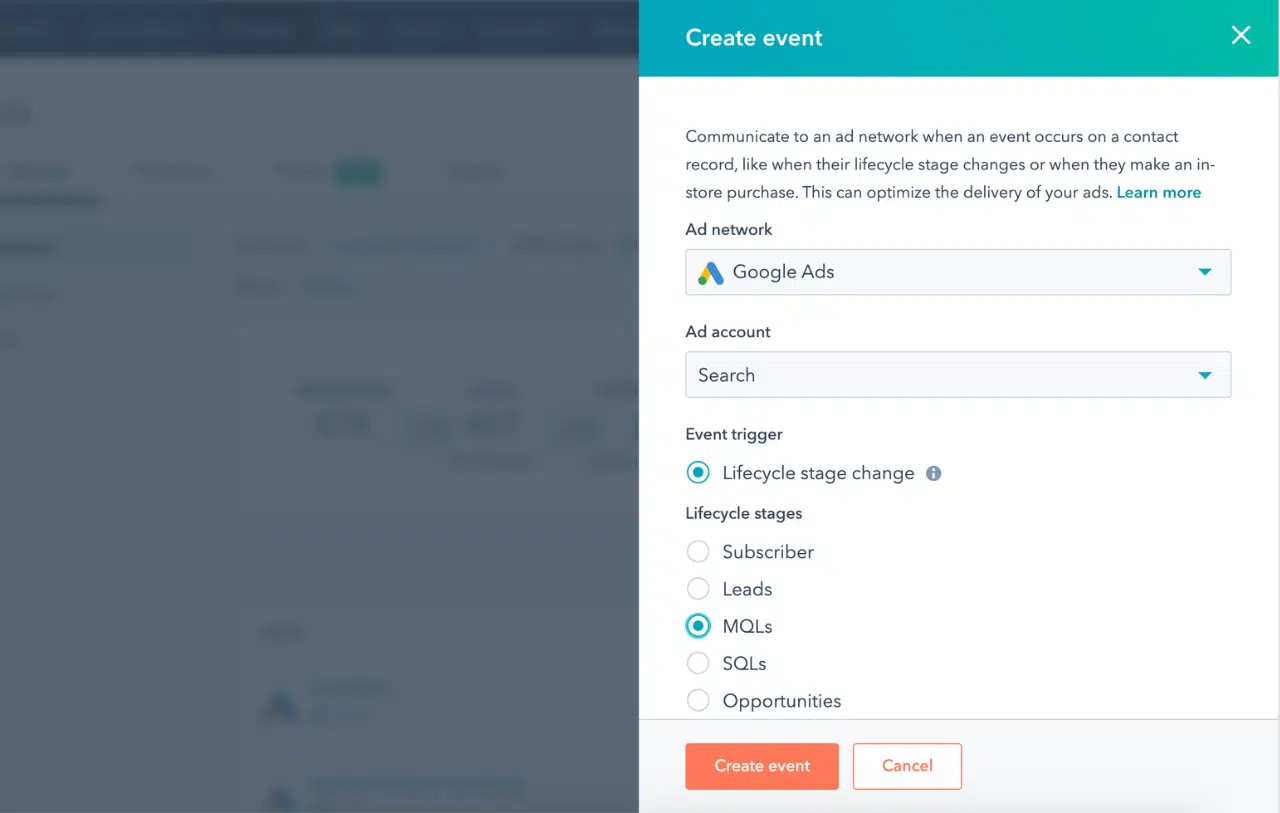
How to Train Google’s AI (Machine Learning) with Lead Quality or Revenue Value
Google’s ad bidding algorithm is a machine learning system that gauges user intent levels, going beyond traditional manual targeting, which tends to optimise based on historical averages rather than real-time, individualised intent.
This algorithm evaluates multiple factors, including bid amount, ad and landing page quality, anticipated click-through rates, historical performance, and user-specific behaviours, such as browsing patterns and prior website interactions. By capturing these nuanced data points, the algorithm can identify high-intent audiences more effectively.
Google’s bidding algorithms work within a feedback loop, using past conversion data to refine its decision-making process. This feedback loop enables continual learning, allowing the algorithm to make progressively accurate bidding decisions as it recognises user behaviours, preferences, and market trends. By supplying precise and high-quality initial inputs, you set a strong foundation for the algorithm’s learning phase, leading to more targeted optimisation and better returns on investment.
The quality of data provided to Google is crucial for algorithmic accuracy.
High-quality inputs result in more effective bid adjustments, yielding better campaign performance. Key ways to enhance data quality include:
- Implementing online and offline conversion tracking for accurate lead scoring.
- Filtering customer lists to include only your top-quality customers, ensuring a substantial minimum (e.g., 1,000 users) for effective analysis.
- Assigning conversion values to distinguish profitable leads, enabling the algorithm to prioritise high-value opportunities.
When using offline conversion tracking, you can optimise for lead quality or for sales value, enabling more refined targeting and bidding strategies that align closely with your business goals.
Target CPA with Lead Scoring
When an online lead is generated through an advertising campaign on platforms like Google, Facebook, or LinkedIn, it’s recorded as a conversion through the platform’s conversion tracking script placed on your website. As that lead moves through your sales process, each completed stage is registered as an offline conversion, building a clearer picture of lead progression.
The ad platform uses these online and offline conversions to gauge lead quality. Leads that advance through the sales stages—such as qualifying or converting to customers—are assigned higher scores. For example:
- An online conversion (initial enquiry) scores 1 point.
- A qualified lead scores an additional point.
- A converted lead (customer) scores another point.
In this model, a lead that becomes a customer accumulates a total of 3 points, while one that doesn’t move past the enquiry stage scores only 1 point. Google Ads requests that leads be marked as “qualified” and “converted” in alignment with these lead stages, creating a basic scoring model such as:
- Lead (low score). This lead does not progress through your sales cycle.
- Qualified Lead (medium score). This lead progresses to qualified.
- Converted Lead (high score). This lead becomes a customer.
The Target CPA strategy then optimises bidding to achieve the highest number of conversions possible, using both online and offline data. Based on conversion volume and quality, you may also test optimising for specific events, focusing solely on high-quality leads rather than initial online leads.
Being able to view the cost for each stage of your sales process in both your CRM and ad platform puts your advertising strategy far ahead, enabling data-driven budget adjustments based on lead quality.
Target ROAS (Return on Ad Spend)
Target ROAS focuses exclusively on maximising revenue by prioritising high-value customers rather than optimising for lead quality alone. Rather than bidding to secure the highest number of conversions, Target ROAS bids on the likelihood of a lead contributing significant revenue. This approach is similar to how e-commerce brands adjust bids to account for product price variations, where simple cost-per-sale optimisation may fall short.
By applying customer scoring, Target ROAS bids more aggressively on high-value prospects, ensuring that ad spend aligns with revenue goals. This strategy is especially valuable for e-commerce businesses with varied product prices, where the goal is to prioritise higher-value transactions rather than just increasing conversion numbers.
Target ROAS and Target CPA
In Google Ads, you can optimise for either the best mix of lead volume and quality using both online and offline conversion tracking with Target CPA bidding or Maximum sales revenue (Target ROAS), but not both simultaneously.
For businesses with both online and offline sales, this presents a unique challenge:
Target CPA: If optimising solely for maximum lead volume, you risk overpaying for lower-value sales or services. This strategy focuses on generating the maximum number of leads without weighing the value of each conversion, which could result in a high volume of low-value sales while missing out on higher-value opportunities.
Target ROAS: Alternatively, optimising for revenue (ROAS) focuses on higher-value conversions but may lack complete revenue visibility without offline conversion tracking. Since offline sales aren’t captured by Google Ads alone, the system may overlook critical data from high-value offline transactions, leading to underperformance and missed revenue from qualified offline leads.
Businesses can address this limitation by integrating offline sales data into Google Ads, allowing the platform to consider both online and offline sales—including valuable offline transactions—in its bid optimisation dataset. With this comprehensive approach, campaigns become more precise in optimising for overall revenue and profit, balancing lower-value and higher-value transactions for maximum efficiency.
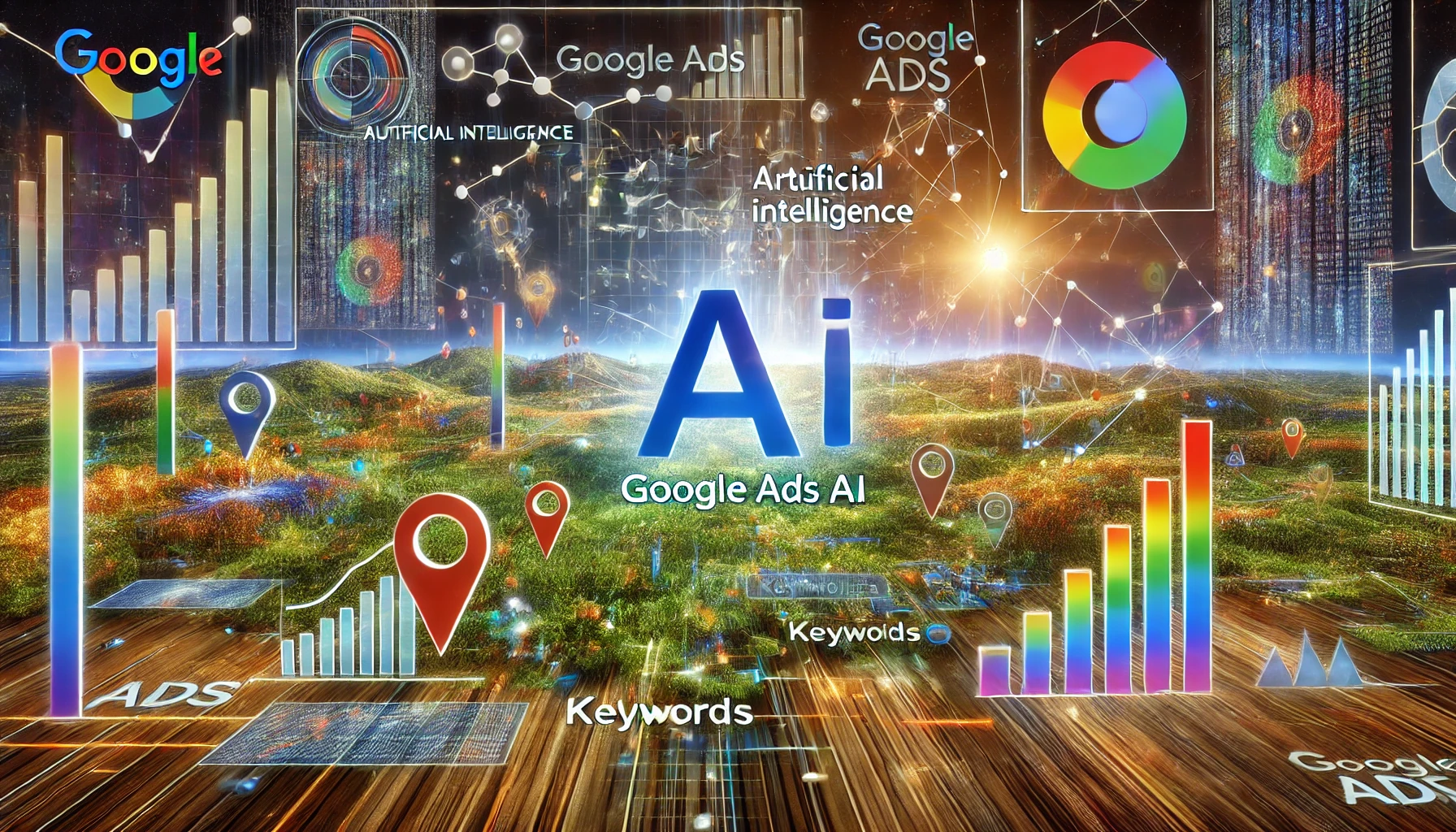
Match Type Targeting
While Broad Match offers extensive reach, it requires careful monitoring and integration with Google Ads AI to ensure that the traffic driven is relevant and likely to convert. Advertisers should regularly review the Automated Insights and performance data to tweak and optimise their keyword strategies, ensuring that Broad Match contributes positively to their overall campaign goals.
In essence, Broad Match is a robust tool in the Google Ads arsenal, ideal for those looking to expand their digital footprint and engage with a broader audience. By leveraging the full spectrum of Google Ads AI features, advertisers can harness the true potential of Broad Match, driving both reach and relevance in their digital advertising efforts.
Google Performance Max (PMax)
Performance Max (PMax) is a unified campaign type that runs across all of Google’s advertising networks. While it’s commonly used within the eCommerce sector, its adoption in the lead generation and service-based industries has been slower. Similarly, broad match keywords—often associated with top-of-funnel search targeting—are also more prevalent in eCommerce.
You can explore this topic further in our guide, How to Use Performance Max for Service-Based Lead Generation.
For service-based businesses that aim to generate leads and expand their reach using broad match keywords or PMax, integrating your CRM with Google Ads is highly recommended. This allows for the import of sales revenue data and tracking of lead cycle progression, ensuring better optimisation. You can explore this topic further in our guide, How to Use Broad Match for Service-Based Lead Generation.
Utilising PMax and broad match keywords transfers significant control to Google’s algorithms, so it’s essential to ensure your Google Ads conversion tracking is fully comprehensive. Ideally, this includes both online and offline conversion tracking for accurate performance measurement.

asdasd
Implementing Google Ads AI in Your Strategy
Implementing AI in Google Ads campaigns can significantly enhance the effectiveness of your advertising efforts through automation, advanced targeting, and real-time optimisation. Here’s a detailed guide on how to successfully integrate AI technologies into your Google Ads strategy:
1. Understand AI Capabilities in Google Ads
Before implementing AI, familiarise yourself with the AI features available in Google Ads, such as Smart Bidding, Responsive Search Ads (RSAs), and automated insights. Understanding each feature’s functionalities and how they can benefit your campaigns is crucial.
2. Define Clear Campaign Goals
AI works best when it has specific goals to optimise towards. Define clear, measurable objectives for your campaigns, such as increasing conversions, maximising clicks, or achieving a specific return on ad spend (ROAS). These goals will guide the AI in making data-driven decisions.
3. Gather and Organise Your Data
AI systems rely heavily on data to make informed decisions. Ensure that your Google Ads account is set up to track all necessary data points, such as conversions, click-through rates, and interaction data. Use Google Analytics and Google Tag Manager to enhance data collection and organisation.
4. Choose the Appropriate AI Tools
Select the AI tools that align with your campaign goals:
- Smart Bidding: Use Smart Bidding strategies like Target CPA, Target ROAS, or Maximise Conversions to let AI optimise your bids based on the likelihood of achieving the defined outcomes.
- Responsive Search Ads: Implement RSAs to allow AI to test different combinations of headlines and descriptions and serve the best-performing ads to your audience.
- Performance Max Campaigns: These use AI to optimise your campaigns across all Google platforms by analysing the performance data of your landing pages and other assets.
5. Set Up AI-Enhanced Campaigns
When setting up your campaigns, configure the settings to enable AI features. For Smart Bidding, for example, choose the strategy that best suits your goals, and set up conversion tracking to let AI assess and optimise bid strategies effectively.
6. Test and Learn
AI in Google Ads is highly effective at testing and learning from different ad elements. Set up A/B tests for various components of your ads, such as different bidding strategies or ad formats. This will allow you to understand which strategies work best and how AI can be further tuned to improve performance.
7. Monitor Performance and Adjust
Regularly review the performance of your AI-driven campaigns. AI can provide insights and suggested optimisations based on performance data. Use these insights to make informed decisions about adjustments to campaign settings, budgets, and strategies.
8. Scale Successful Campaigns
Once AI tools prove effective for specific campaigns, consider scaling these strategies to other parts of your advertising efforts. AI can manage increased budgets and more complex campaigns efficiently, allowing you to expand your advertising reach while maintaining effectiveness.
9. Stay Updated
AI technology and capabilities within Google Ads are continually evolving. Stay updated with the latest tools, features, and best practices by regularly reviewing Google’s updates and participating in digital marketing forums and training.
Implementing AI in Google Ads involves a blend of strategic planning, a thorough understanding of available AI tools, continuous testing, and data-driven optimisation. By effectively utilising AI, advertisers can enhance campaign performance, achieve better scalability, and optimise their ad budget more efficiently.
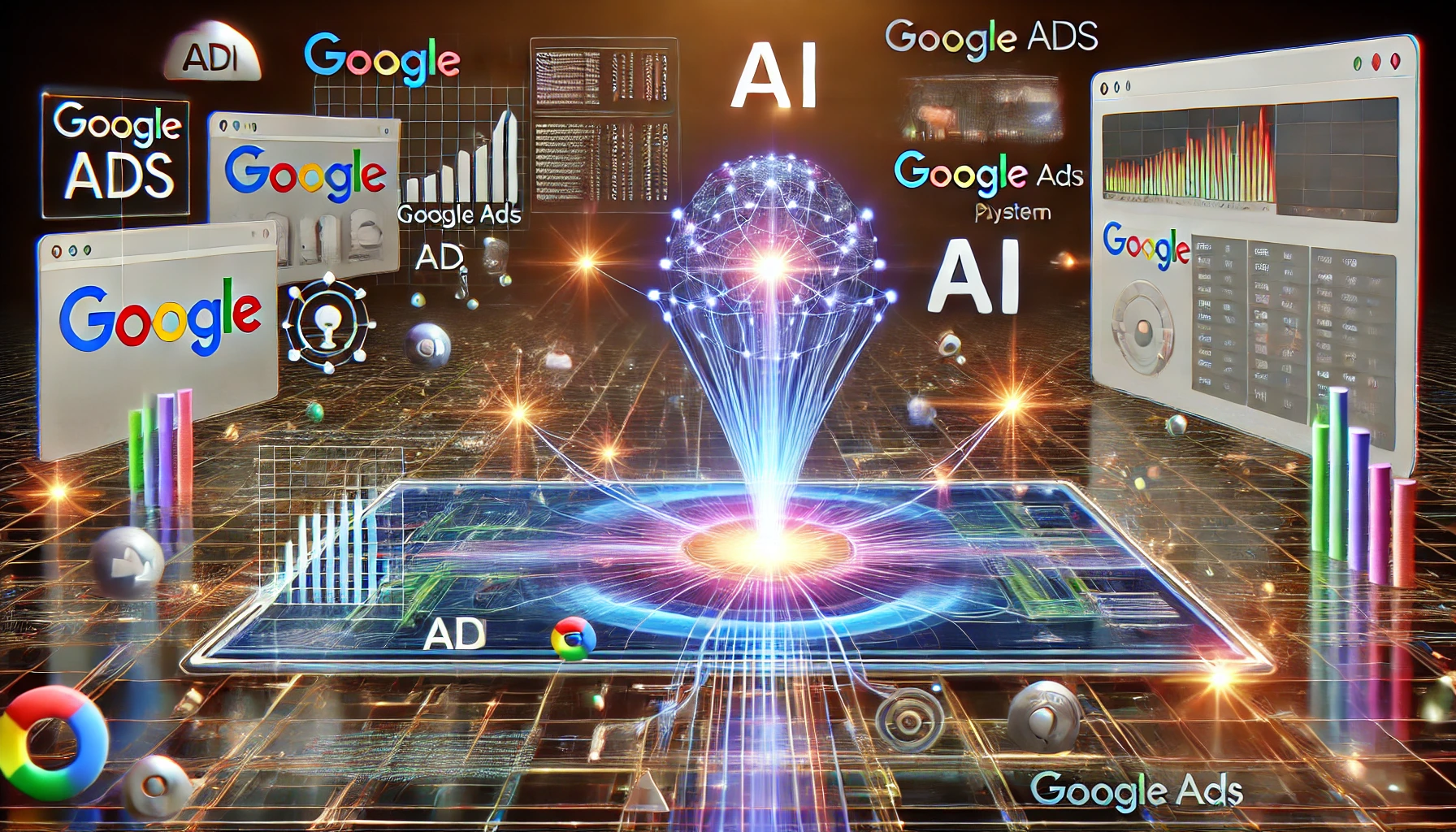
Strengthening Your Measurement Strategy with High-Quality Data
The foundation of any successful AI-driven campaign is high-quality, consented data. Google’s AI is only as good as the data you feed it, and first-party data is particularly valuable. This data, collected directly from your customers, provides insights that are specific to your audience, enabling more accurate targeting and better campaign outcomes.
Consent and Data Collection in the UK and EEA: For businesses operating in the UK and EEA, collecting and maintaining user consent is crucial. Google’s Consent Mode can help you create a strong framework for this, ensuring that you comply with GDPR regulations while still capturing essential data. This mode adjusts how your Google tags behave based on users’ consent status, helping you gather more actionable insights without compromising privacy.
Site-Wide Tagging: Implementing robust site-wide tagging with the Google tag is essential for capturing the most relevant data. This tag allows you to track user interactions across your website, providing comprehensive data that AI can use to optimise your campaigns. Ensure your tags are properly set up to capture the metrics that matter most to your business, such as conversion actions, user behaviours, and engagement metrics.
Reaching and Re-Engaging Customers with Customer Match
Customer Match is another powerful tool in your AI arsenal. It allows you to upload your first-party customer data to Google Ads, enabling you to reach and re-engage your existing customers across Google’s platforms.
Use Customer Match to create highly personalised campaigns that resonate with your audience. By targeting users based on their previous interactions with your brand, you can deliver more relevant ads, increase engagement, and drive higher conversion rates.
Prioritising Creative Inputs and AI-Powered Tools
In addition to data and bidding strategies, the creative elements of your ads play a crucial role in campaign success. Google’s AI-powered creative tools can help you develop a wide range of assets, ensuring your campaigns are visually appealing and effective.
Creative Strategy: Start with strong creative inputs that align with your brand and campaign objectives. High-quality visuals, compelling copy, and clear calls-to-action are essential.
AI-Powered Creative Tools: Once your creative assets are in place, use Google’s AI-powered tools to generate variations and optimise them for different formats and audiences. These tools can help you produce a diverse set of ads tailored to various placements, ensuring maximum reach and engagement.

CRM Integration: Unlocking the Full Potential of Google Ads AI
For advertisers looking to maximise the effectiveness of Google Ads AI, integrating a Customer Relationship Management (CRM) system is a game-changer. When properly linked, your CRM system feeds critical customer data directly into Google Ads, allowing AI to optimise campaigns based on real-world outcomes. This integration enables a closed-loop feedback system that enhances targeting, bidding, and reporting, creating a seamless flow of information between your marketing efforts and your sales funnel.
Benefits of CRM Integration with Google Ads AI:
Enhanced Lead Quality: By syncing CRM data, Google Ads can prioritise campaigns that generate leads most likely to convert, helping the AI focus on what drives true business value, not just clicks or impressions.
Optimised Bid Strategies: CRM data allows for smarter bid adjustments, ensuring that high-value leads are targeted more aggressively, while low-value leads receive less spend.
Improved Attribution: With CRM integration, you can track customer interactions from the first click to the final sale, providing greater insight into the customer journey and more accurate return on ad spend (ROAS) calculations.
Audience Retargeting: Syncing CRM lists with Google Ads helps build powerful retargeting campaigns. You can re-engage past customers, target upsell opportunities, or create lookalike audiences based on your most valuable clients.
How CRM Integration Complements AI:
By feeding your Google Ads campaigns with CRM data, the AI can become even more refined and predictive. This integration ensures that ad spend is focused on generating high-quality leads, and that bid strategies are closely aligned with business outcomes like customer lifetime value or sales revenue.
For more detailed guidance on implementing CRM integration with your Google Ads campaigns, check out our comprehensive Guide to Implementing Google Ads CRM Integration.
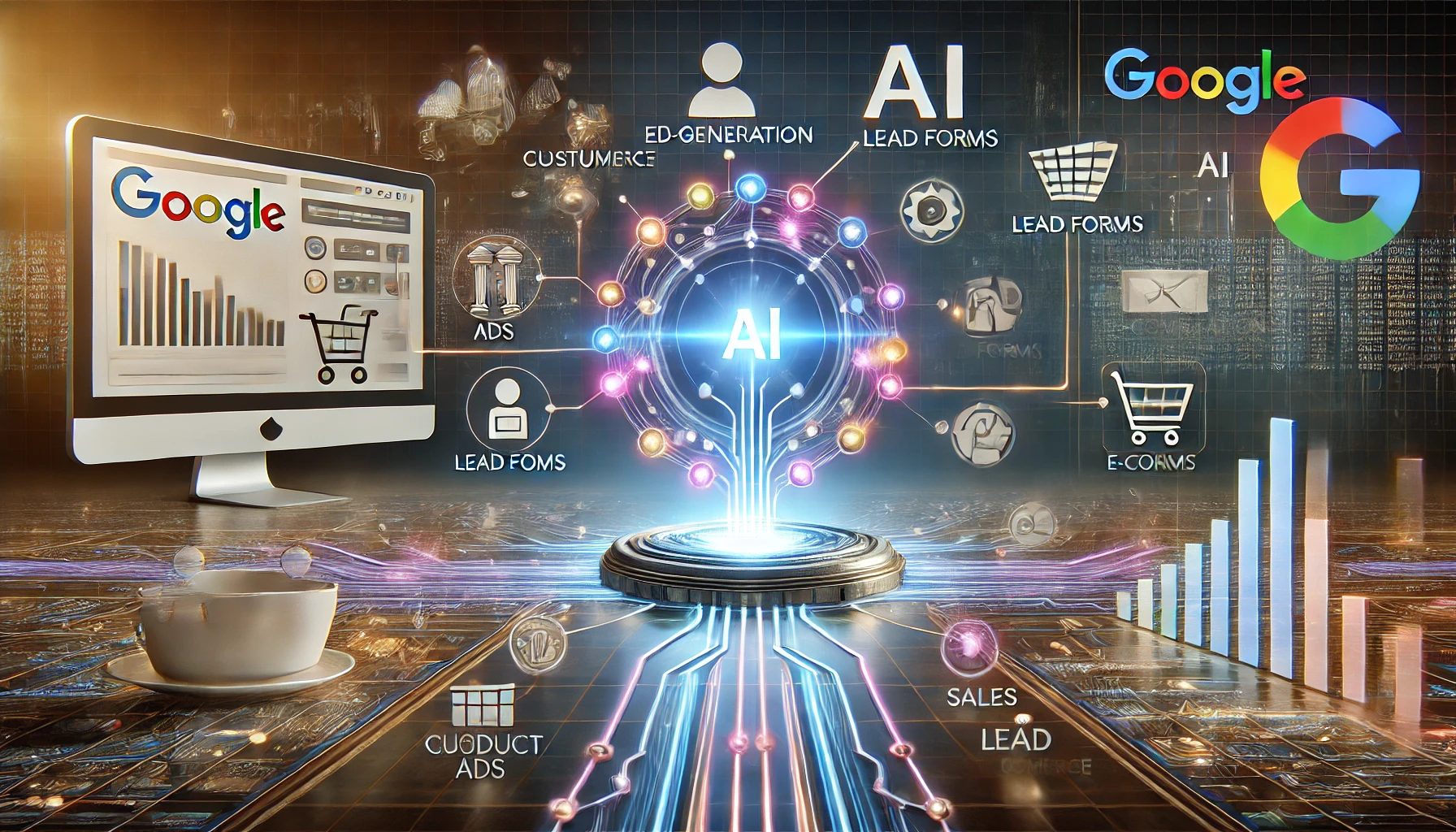
Using Chat GPT Generative AI as an Independent Advisor to Google's AI
Google continues to make strides in AI development, but it’s important to recognise other key players in the space, such as OpenAI with ChatGPT.
Leveraging these AI tools together can bring a fresh perspective to your Google Ads campaigns, ensuring you cover all possible angles. By incorporating generative AI like ChatGPT, advertisers can create more engaging ad copy, optimise targeting strategies, and improve campaign management efficiency.
This combination allows for a more dynamic approach to Google Ads, driving better performance through innovative, data-driven insights.
Want to learn more about using Chat GPT and Google Ads? See our guide: Using ChatGPT With Google Ads
Conclusion
In conclusion, the evolution of Google Ads from manual management to AI-driven automation has brought both opportunities and challenges for advertisers. While the manual approach once provided complete control over every aspect of a campaign, today’s digital landscape requires a more dynamic, data-driven approach. AI in Google Ads offers unparalleled benefits—such as automation, real-time bidding, predictive analytics, and broader reach—making it a powerful tool for advertisers looking to stay competitive.
However, as AI continues to push campaigns further up the funnel and broaden keyword match types, it’s crucial to understand that without proper setup and strategy, AI can potentially work against you by serving your ads to less-qualified audiences. The key to making Google Ads AI work for you lies in finding the right balance between automation and manual oversight. Start ensuring your conversion tracking is robust and includes both online and offline data.
By implementing a structured approach—such as testing AI in controlled campaigns with separate budgets, focusing first on bottom-of-the-funnel targeting, and gradually expanding—advertisers can regain control and harness AI’s full potential. The integration of AI with CRM data for enhanced targeting and retargeting, along with precise audience segmentation, allows businesses to personalise campaigns further and deliver more relevant ads to their audience.
In summary, while AI in Google Ads represents a powerful shift in digital advertising, its true potential is unlocked when combined with human oversight, strategic goal setting, and a focus on delivering high-quality leads. By following a measured approach and making data-driven decisions, you can leverage Google Ads AI to its fullest, driving both efficiency and performance in your campaigns.